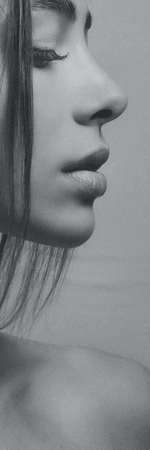As ENT specialists, we’re highly knowledgeable about a range of conditions that affect the ear, nose and throat. Today, we’re focusing on sinus infections, or sinusitis. This is a condition that’s usually triggered by a cold or flu, where the inside passages behind the nose, cheeks and forehead become inflamed (swollen). Read on to find out more about the condition, its causes and its treatments.
So, what exactly are the sinuses?
Experts describe them as ”a connected system of hollow cavities in the skull”, one of the reasons the sinuses are often called ”nasal cavities”. There are actually four different sinuses:
• The frontal sinus, found in the front-centre of the forehead
• The maxillary sinus, on either side of the nose in the cheekbone area
• The sphenoid sinus, located near the brow area in bones that lie behind your nose
• The ethmoid sinuses, a collection of cavities that sit next to the sphenoid sinus, between the eyes.
They range in size, with the largest being around an inch across, and found behind the cheekbones.
What do your sinuses do?
Inside the sinuses is a soft tissue lining, called the mucosa. The structures work to help humidify and filter the air, ultimately draining into the nose. The sinuses can become inflamed and infected, causing a range of symptoms.
What causes sinus infections (sinusitis)?
There are a whole host of sinus conditions and concerns, ranging from a simple sinus infection caused by viruses, fungi or bacteria, to chronic (persistent) sinusitis with repeated bouts of infection. There’s also allergic rhinitis, which is caused by allergies to everything from pets to pollen and dust.
How do I know what type of sinusitis I have?
The symptoms can give you a clue, for example tickling and itching in the nose with bouts of sneezing might indicated allergic rhinitis, while mucus, congestion and pain in areas like the eyes, nose and forehead could be a sinus infection. It’s also possible that small growths (polyps) can form due to inflammation.

How is sinusitis diagnosed?
A specialist or doctor can try all kinds of methods, ranging from an examination (which might involve looking inside the nose, or tapping on the face to look for pain) to CT or MRI scans and a rhinoscopy (looking inside the nose with a camera).
How is sinusitis treated?
Sinusitis treatment can take many forms, for example:
• Antibiotics to treat an infection or antihistamines to combat allergy
• Decongestants to reduce mucus and congestion
• Sprays to rinse away mucus or break up dried mucus, and keep the nose moist while easing swelling
In some cases, sinusitis treatment might involve sinus surgery, for example if there are polyps inside your sinuses.
What’s the best sinusitis treatment for me?
Only a doctor or ENT specialist, like Jon Hughes, can advise on sinusitis treatment, including sinus surgery. To book a consultation at our London practice, talk to our team today.
